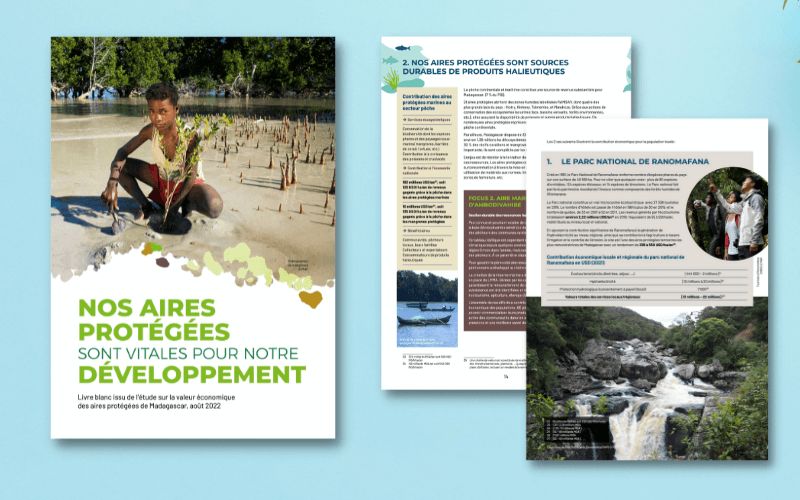
Did you know that the flow of water that supplies Andekaleka hydroelectric dam depends on the health of the Ankeniheny Zahamena protected area? That nearly 70% of foreign tourists who come to Madagascar visit at least one protected area? That the fishery products in or near protected areas exceed in quantity and quality those outsides, thanks to the good conservation of the marine protected areas and the wetlands?
Find out how and why protected areas contribute to the local, national and even the global economy in the White Paper “Our protected areas are vital for our development. Based on the Study of Economic Value of Protected Areas – Review of the Evidence, this paper outlines the key findings.
Recommendations that match our contributions
66 USD/ha is the average contribution of a protected area to the local economy. The credit goes to the field agents and communities. They work to preserve lakes, seabed, forests, in short, the entire natural ecosystem. Recommendations are to be considered to ensure that the impact of this conservation is sustainable and moves up to a higher level.
More favourable public policies should be put in place and implemented. Then, greater financial resources should be allocated to prevent or fight against threats. In short, communities around protected areas will need to be more supported and mobilized in the sustainable management of our natural resources.
An advocacy tool
Currently available in French and soon in Malagasy and English versions, the White Paper will serve as an advocacy tool. It translates in an accessible language the proven importance of preserving these last Madagascar sanctuaries of nature. It aims to influence public policies with a view to further enhance the importance to protected areas.
The White Paper is thereby aimed at authorities at all levels, national, regional and communal, as well as those whose voices can shape public policy: politicians, media, public opinion, the private sector and donors.
The White Paper and the full study can be downloaded from www.fapbm.org/publications and www.parcs-madagascar.com.




